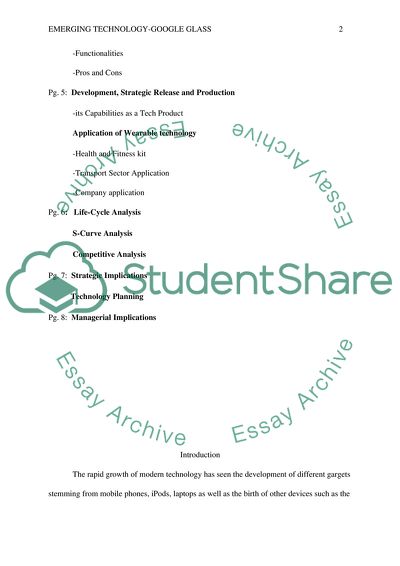Cite this document
(Emerging Technology - Google Glass Term Paper Example | Topics and Well Written Essays - 2000 words, n.d.)
Emerging Technology - Google Glass Term Paper Example | Topics and Well Written Essays - 2000 words. https://studentshare.org/information-technology/1815739-emerging-technology-google-glass
Emerging Technology - Google Glass Term Paper Example | Topics and Well Written Essays - 2000 words. https://studentshare.org/information-technology/1815739-emerging-technology-google-glass
(Emerging Technology - Google Glass Term Paper Example | Topics and Well Written Essays - 2000 Words)
Emerging Technology - Google Glass Term Paper Example | Topics and Well Written Essays - 2000 Words. https://studentshare.org/information-technology/1815739-emerging-technology-google-glass.
Emerging Technology - Google Glass Term Paper Example | Topics and Well Written Essays - 2000 Words. https://studentshare.org/information-technology/1815739-emerging-technology-google-glass.
“Emerging Technology - Google Glass Term Paper Example | Topics and Well Written Essays - 2000 Words”. https://studentshare.org/information-technology/1815739-emerging-technology-google-glass.


